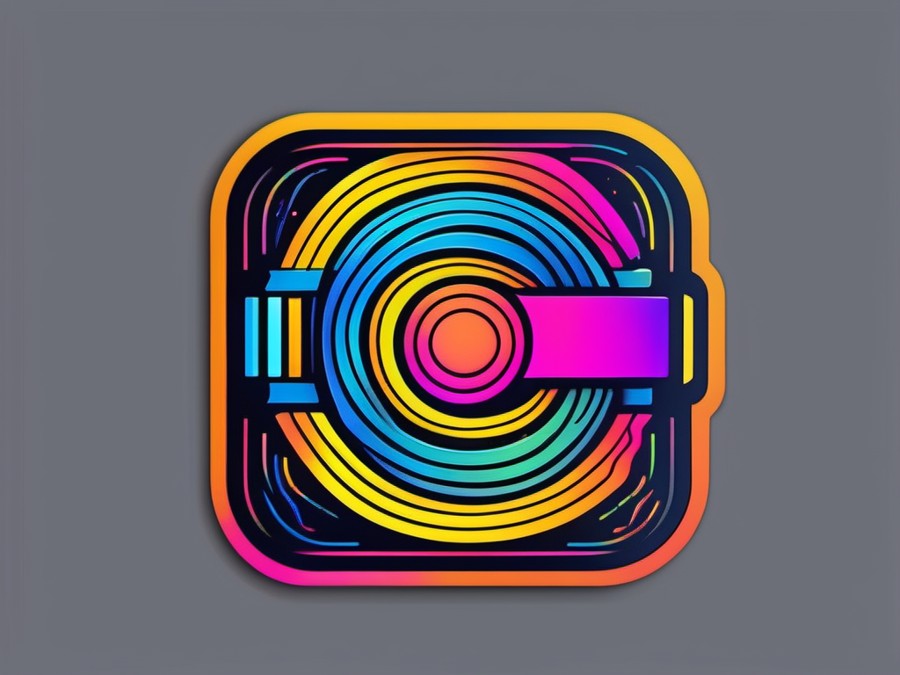· Charlotte Will · Cables · 9 min read
What is a USB-C Cable and Its Benefits?
Discover the benefits and future implications of USB-C cables in this comprehensive guide. Learn how USB-C outpaces older standards and why it's essential for modern connectivity needs.

In today’s fast-paced world of technology, staying connected is more important than ever. Enter the USB-C cable—a marvel in modern connectivity that has revolutionized how we power and transfer data between devices. But what exactly is a USB-C cable, and why should you care about its benefits? Let’s dive in!
Understanding USB-C: A Brief Overview
What is USB-C?
A USB-C cable, also known as a USB Type-C cable, is the latest iteration in the Universal Serial Bus (USB) standard. USB-C features a slim, reversible connector that can be plugged in either way, making it incredibly user-friendly. This cable type is rapidly becoming the go-to for modern devices, from smartphones to laptops.
The Evolution of USB Standards
The journey from the bulky USB-A to the sleek USB-C represents a significant leap forward in technology. Early iterations of USB were designed to handle basic data transfer tasks, but USB-C was built with the future in mind. It combines high data transfer rates, faster charging capabilities, and a versatile design that supports various devices.
Why USB-C is the Future
One of the standout features of USB-C is its backward compatibility. While USB-C itself is a significant upgrade, it can still work seamlessly with older USB standards through adapters. This ensures that your investment in USB-C cables is future-proof, adapting to the ever-changing landscape of technology.
The Design and Features of USB-C Cables
The Physical Appearance of USB-C
At first glance, the USB-C connector is distinctively different from its predecessors. Its oval shape and small size contribute to a sleeker design that fits well with the modern aesthetic of thin, lightweight devices. To make things even more convenient, USB-C allows for reversible connection, eliminating the need to flip the cable around to find the correct side.
Reversible Design
Imagine never having to fumble with a cable again, trying to figure out which way is up. With USB-C, that’s exactly what you get. Simply line up the connector with the port, and voilà—no more frustration.
High Data Transfer Speeds
When it comes to data transfer, USB-C is in a league of its own. Depending on the specifications, USB-C cables can support data transfer rates up to 40 Gbps. This means moving large files, such as high-resolution photos or videos, becomes a breeze.
Enhanced Power Delivery
One of the most impressive features of USB-C is its advanced power delivery capabilities. Unlike older USB standards, USB-C can charge devices at much higher speeds and power outputs. This is particularly beneficial for high-power devices like laptops, which can draw up to 100W through a USB-C connection.
Benefits of Using a USB-C Cable
Faster Data Transfer Rates
In the digital age, time is of the essence. USB-C cables facilitate rapid data transfer, ensuring you can move large files in record time. Whether you’re a professional who needs to transfer files frequently or simply someone who likes to keep their photos and videos organized, USB-C will save you precious minutes.
Improved Power Efficiency
Efficient power management is a critical advantage of USB-C. Unlike older USB standards that could deliver only up to 7.5W, USB-C can handle much higher power outputs. This means faster charging times and reduced energy consumption, making it a practical choice for eco-conscious users.
Versatility Across Devices
One of the best things about USB-C cables is their sheer versatility. They support a wide array of devices, from smartphones and tablets to laptops and external hard drives. With the right adapter, you can even connect your devices to older technology, making USB-C a universally useful tool.
Future-Proofing Your Tech
Investing in USB-C cables is akin to investing in the future of connectivity. As more and more devices adopt USB-C, having these cables on hand ensures that you’re ready for anything. Whether it’s the latest laptop or a cutting-edge external hard drive, USB-C will keep you connected.
USB-C vs. Other Types of Cables
USB-C vs. USB-A
The most noticeable difference between USB-C and its predecessor, USB-A, is the physical design. While USB-A connectors are larger and rectangular, USB-C is smaller and oval-shaped. Additionally, USB-C supports faster data transfer rates and higher power delivery than USB-A.
USB-C vs. Micro-USB
Compared to Micro-USB, USB-C offers a more robust and versatile solution. While Micro-USB is primarily used for charging smaller devices, USB-C can handle both data transfer and power delivery at much higher capacities.
USB-C vs. Lightning Cable
Lightning cables, primarily used by Apple, are known for their high data transfer rates. However, USB-C cables offer greater versatility and are compatible with a wider range of devices. Moreover, USB-C supports faster charging capabilities than Lightning cables.
USB-C vs. Thunderbolt 3
Both USB-C and Thunderbolt 3 use the same connector, but there’s a key distinction. While USB-C can support data transfer rates up to 40 Gbps, Thunderbolt 3 can achieve even faster speeds, up to 40 Gbps. However, Thunderbolt 3 comes at a premium cost, making it more suitable for professional use.
Practical Uses of USB-C Cables
Charging Devices
One of the most common uses for USB-C cables is charging devices. From your smartphone to your laptop, a single USB-C cable can power multiple devices. Thanks to its advanced power delivery capabilities, USB-C can charge your devices faster than traditional charging methods.
Data Transfer Between Devices
Whether you’re transferring files from your laptop to an external hard drive or syncing data between two devices, USB-C cables offer fast and efficient data transfer. This is particularly useful for professionals who need to move large files quickly.
Connecting External Displays
For a more productive workspace, consider connecting an external display using a USB-C cable. This setup allows you to extend your screen real estate, making multitasking a breeze.
Powering Accessories
With the right adapter, your USB-C cable can power a variety of accessories. This includes everything from keyboards and mice to external storage devices. The versatility of USB-C makes it a practical solution for both personal and professional use.
Choosing the Right USB-C Cable for You
What to Look For in a USB-C Cable
When shopping for a USB-C cable, there are several factors to consider. Look for cables that support high data transfer rates and power delivery capabilities. Additionally, consider the length and quality of the cable to ensure it meets your needs.
Top USB-C Cables on the Market
There are numerous high-quality USB-C cables available on the market. Some top choices include cables from reputable brands like Anker, Belkin, and Google. Each of these cables offers a mix of durability, speed, and versatility.
Avoiding Common Pitfalls
One common pitfall to avoid when purchasing a USB-C cable is opting for the cheapest option. While it might save you money in the short term, a low-quality cable can cause data transfer issues or even damage your devices.
FAQs on USB-C Cables
Can I Use a USB-C Cable with Older Devices?
Yes, you can use a USB-C cable with older devices through the use of adapters. This allows you to take advantage of USB-C’s benefits while still using your existing technology.
Is USB-C Faster Than Other USB Standards?
Absolutely! USB-C offers faster data transfer rates and higher power delivery capabilities than older USB standards. This makes it a superior choice for modern connectivity needs.
How Do I Know If My Device Supports USB-C?
Check your device’s specifications to determine if it supports USB-C. Most modern devices, including smartphones and laptops, are equipped with USB-C ports. If your device doesn’t support USB-C, you may need an adapter or a different type of cable.
Can I Use Any USB-C Cable for Charging?
Not all USB-C cables are created equal when it comes to charging. Some cables may not support the necessary power delivery capabilities for fast charging. Always check the cable’s specifications to ensure it meets your needs.
What Are the Future Implications of USB-C?
The future looks bright for USB-C. As more devices adopt this standard, USB-C will become the norm for connectivity. This ensures that your investment in USB-C cables is future-proof and ready for the next wave of technology.
Conclusion
Investing in a USB-C cable is not just about staying connected—it’s about embracing the future of technology. From faster data transfer rates to improved power efficiency, USB-C offers a myriad of benefits that make it an essential tool for modern users. So what are you waiting for? Dive into the world of USB-C and experience the future of connectivity today!
FAQs:
What are the main advantages of USB-C over older standards?
The main advantages of USB-C over older standards include faster data transfer rates, improved power efficiency, and a versatile design that supports a wide range of devices.
Why is USB-C considered future-proof?
USB-C is considered future-proof due to its backward compatibility with older USB standards and its ability to adapt to the ever-changing landscape of technology.
Are all USB-C cables created equal?
Not all USB-C cables are created equal. It’s important to check the cable’s specifications for data transfer rates and power delivery capabilities to ensure it meets your needs.
Can I use a USB-C cable to connect my external hard drive?
Yes, you can use a USB-C cable to connect your external hard drive. USB-C supports fast data transfer rates, making it an ideal choice for moving large files quickly.
What should I do if my device doesn’t support USB-C?
If your device doesn’t support USB-C, you may need an adapter or a different type of cable to take advantage of its benefits. Additionally, consider upgrading to a device that supports USB-C for future-proof connectivity.
Internal Links:
For more information on the benefits of USB-C, check out our articles:
- What is a USB-C Cable and Its Benefits?
- What is a USB-C Cable and How Does It Benefit Your Devices?
- What is a USB Type-C Cable and Its Advantages?
- What is a USB 3.0 Hard Drive Cable and What Are Its Benefits?
- What is a USB Type-C cable and why do you need one?
- What is a USB-C to VGA Adapter?
- What is a portable USB hub and what are its benefits?
- What is a USB Modem and What are its Benefits?
- What is a USB-C Charger and How Does it Differ from Others?
- What is a USB-C Charger and How Does it Benefit Your Devices?




